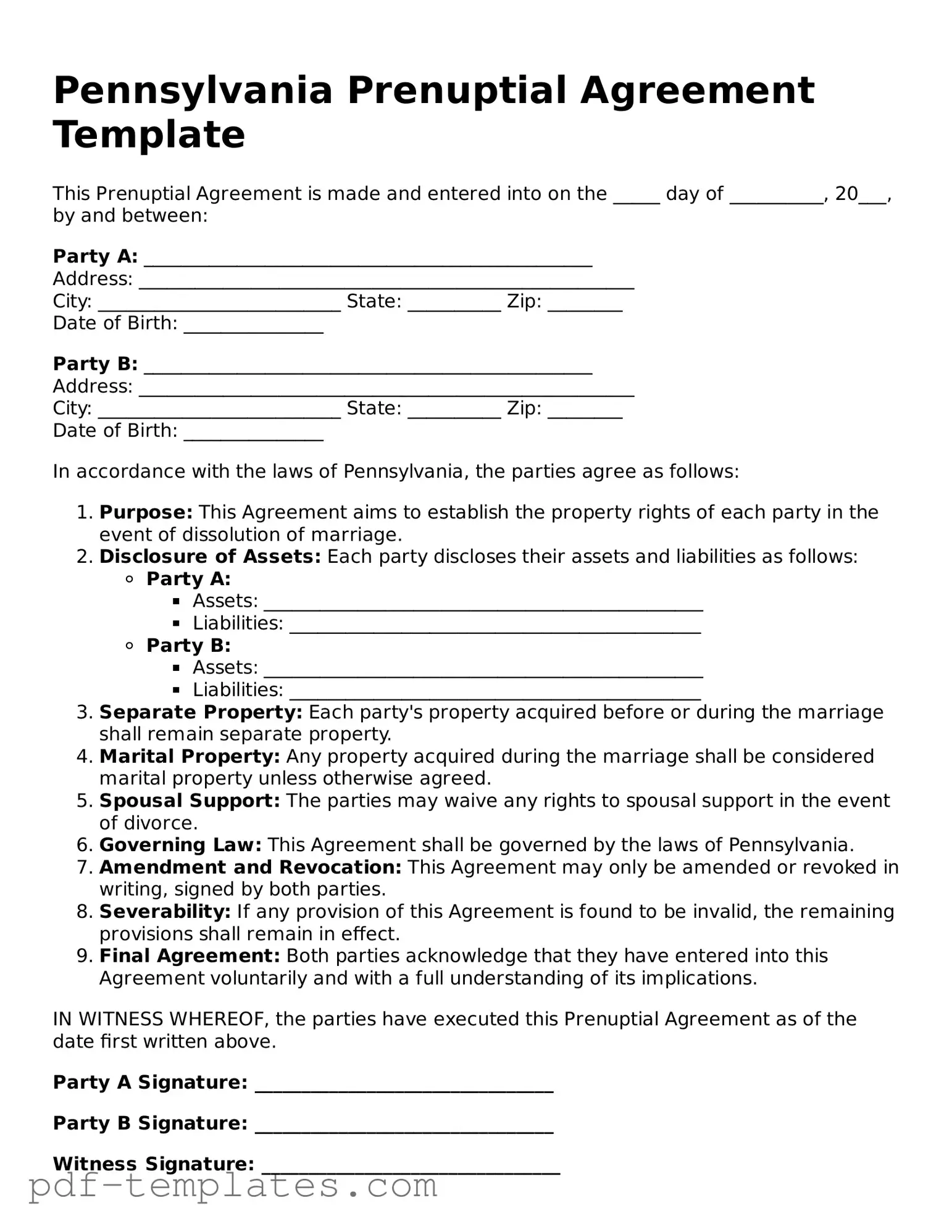A cohabitation agreement is a document often used by couples who live together but are not married. Like a prenuptial agreement, it outlines the rights and responsibilities of each partner regarding property, finances, and other personal matters. Both agreements aim to provide clarity and protection for individuals in a relationship, ensuring that both parties understand their obligations and rights. While a prenuptial agreement is typically executed before marriage, a cohabitation agreement can be created at any point during the relationship, making it a flexible option for couples who want to establish boundaries and expectations.
A postnuptial agreement serves a similar purpose to a prenuptial agreement but is created after the couple is already married. This document can address issues such as property division and financial responsibilities, much like a prenup. Couples may choose to create a postnuptial agreement if their circumstances change, such as a significant increase in income or the acquisition of new assets. Both agreements are designed to protect the interests of each partner, but a postnuptial agreement may also reflect the evolution of the relationship over time.
A separation agreement is another document that shares similarities with a prenuptial agreement. This document is used when a couple decides to live apart, whether temporarily or permanently. It outlines the terms of the separation, including financial arrangements, child custody, and division of property. Like a prenuptial agreement, a separation agreement aims to minimize conflict and provide clear guidelines for each party. Both documents can help couples navigate difficult transitions, ensuring that both individuals have a mutual understanding of their rights and responsibilities.
A marital settlement agreement is often used during divorce proceedings and can resemble a prenuptial agreement in that it addresses the division of assets and debts. This document is created when a couple agrees on how to handle their financial matters and other issues related to their marriage. While a prenuptial agreement is established before marriage, a marital settlement agreement is finalized during the divorce process. Both agreements serve to protect the interests of each party, but the marital settlement agreement is specifically tailored to resolve disputes that arise when a marriage ends.
To embark on your educational journey, consider the Texas Homeschool Letter of Intent form as a crucial starting point, empowering families to take control of their homeschooling experience. For more information, visit this informative guide on Homeschool Letter of Intent procedures.
A property settlement agreement is similar to a prenuptial agreement in that it focuses on the division of property and assets. This document is often used in divorce cases to outline how the couple's property will be divided. Both agreements aim to clarify ownership and responsibilities regarding assets. However, a property settlement agreement is typically executed after the couple has decided to separate, whereas a prenuptial agreement is established before marriage. Both documents can help reduce potential disputes and provide a clear understanding of each party's rights.
An estate plan can also bear resemblance to a prenuptial agreement, particularly in the context of asset protection. An estate plan includes documents such as wills and trusts that dictate how a person's assets will be distributed upon their death. While a prenuptial agreement addresses asset division during a marriage or divorce, an estate plan focuses on what happens after one party passes away. Both documents are essential for protecting individual interests and ensuring that personal wishes are honored, providing peace of mind for both partners.
